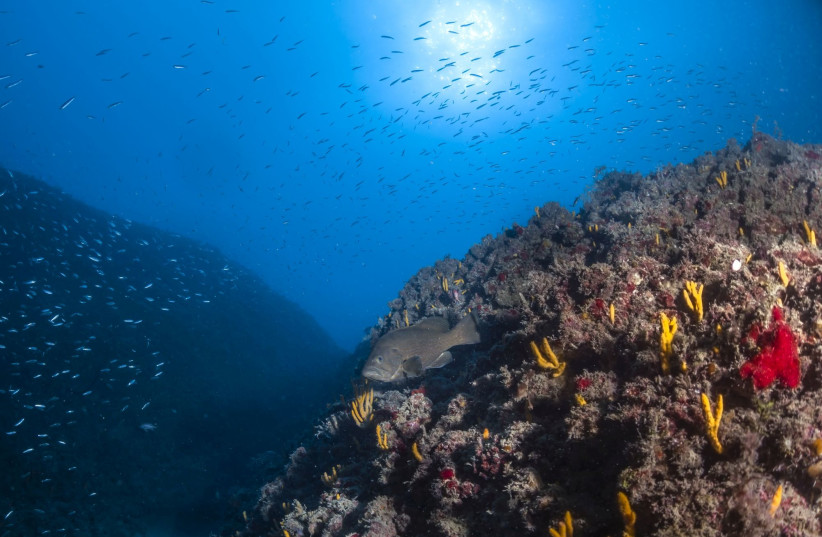40% of animals, 34% of plants in US are at risk of extinction

Everything from crayfish and cacti to freshwater mussels and iconic American species such as the Venus flytrap is in danger of disappearing.
A leading conservation research group found that 40% of animals and 34% of plants in the United States are at risk of extinction, while 41% of ecosystems are facing collapse.
Everything from crayfish and cacti to freshwater mussels and iconic American species such as the Venus flytrap is in danger of disappearing, a report released on Monday found.
NatureServe, which analyzes data from its network of over 1,000 scientists across the United States and Canada, said the report was its most comprehensive yet, synthesizing five decades' worth of its own information on the health of animals, plants and ecosystems.
Importantly, the report pinpoints the areas in the United States where land is unprotected and where animals and plants are facing the most threats.
Sean O'Brien, president of NatureServe, said the conclusions of the report were "terrifying" and he hoped it would help lawmakers understand the urgency of passing protections, such as the Recovering America's Wildlife Act that stalled out in Congress last year.
"If we want to maintain the panoply of biodiversity that we currently enjoy, we need to target the places where the biodiversity is most threatened," O'Brien said. "This report allows us to do that."
US Representative Don Beyer, a Democrat who has proposed legislation to create a wildlife corridor system to rebuild threatened populations of fish, wildlife and plants, said NatureServe's work would be critical to helping agencies identify what areas to prioritize and where to establish migration routes.
"The data reported by NatureServe is grim, a harrowing sign of the very real problems our wildlife and ecosystems are facing," Beyer told Reuters. "I am thankful for their efforts, which will give a boost to efforts to protect biodiversity."
Human encroachment
Among the species at risk of disappearing are icons like the carnivorous Venus flytrap, which is only found in the wild in a few counties of North and South Carolina.
Nearly half of all cacti species are at risk of extinction, while 200 species of trees, including a maple-leaf oak found in Arkansas, are also at risk of disappearing. Among ecosystems, America's expansive temperate and boreal grasslands are among the most imperiled, with over half of 78 grassland types at risk of a range-wide collapse.
The threats against plants, animals and ecosystems are varied, the report found, but include "habitat degradation and land conversion, invasive species, damming and polluting of rivers, and climate change."
California, Texas and the southeastern United States are where the highest percentages of plants, animals and ecosystems are at risk, the report found.
Those areas are both the richest in terms of biodiversity in the country, but also where population growth has boomed in recent decades, and where human encroachment on nature has been harshest, said Wesley Knapp, the chief botanist at NatureServe.
Knapp highlighted the threats facing plants, which typically get less conservation funding than animals. There are nearly 1,250 plants in NatureServe's "critically imperiled" category, the final stage before extinction, meaning that conservationists have to decide where to spend scant funds even among the most vulnerable species to prevent extinctions.
"Which means a lot of plants are not going to get conservation attention. We're almost in triage mode trying to keep our natural systems in place," Knapp said.
Nature savings account
Vivian Negron-Ortiz, the president of the Botanical Society of America and a botanist with the US Fish and Wildlife Service, who was not involved in the NatureServe report, said there is still a lot scientists do not know and have not yet discovered about biodiversity in the United States, and that NatureServe's data helped illuminate that darkness.
More than anything, she sees the new data as a call to action.
"This report shows the need for the public to help prevent the disappearance of many of our plant species," she said. "The public can help by finding and engaging with local organizations that are actively working to protect wild places and conserve rare species."
John Kanter, the senior wildlife biologist with the National Wildlife Federation, said the data in the report, which he was not involved with, was essential to guiding state and regional officials in creating impactful State Wildlife Action Plans (SWAPs), which they must do every 10 years to receive federal funding to protect vulnerable species.
Currently, $50 million in federal funding is divided up among all states to carry out their SWAPs. The Recovering America's Wildlife Act, whose congressional sponsors say will be reintroduced soon, would have increased that to $1.4 billion, which would have a huge impact on the state's abilities to protect animals and ecosystems, Kanter said, and the NatureServe report can act as roadmap for officials to best spend their money.
"Our biodiversity and its conservation is like a 'nature savings account' and if we don't have this kind of accounting of what's out there and how's it doing, and what are the threats, there's no way to prioritize action," Kanter said. "This new report is critical for that."
Jerusalem Post Store
`; document.getElementById("linkPremium").innerHTML = cont; var divWithLink = document.getElementById("premium-link"); if (divWithLink !== null && divWithLink !== 'undefined') { divWithLink.style.border = "solid 1px #cb0f3e"; divWithLink.style.textAlign = "center"; divWithLink.style.marginBottom = "15px"; divWithLink.style.marginTop = "15px"; divWithLink.style.width = "100%"; divWithLink.style.backgroundColor = "#122952"; divWithLink.style.color = "#ffffff"; divWithLink.style.lineHeight = "1.5"; } } (function (v, i) { });

